Indulge me while I dream of living in a round house that looks out over the ocean in Hawaii –
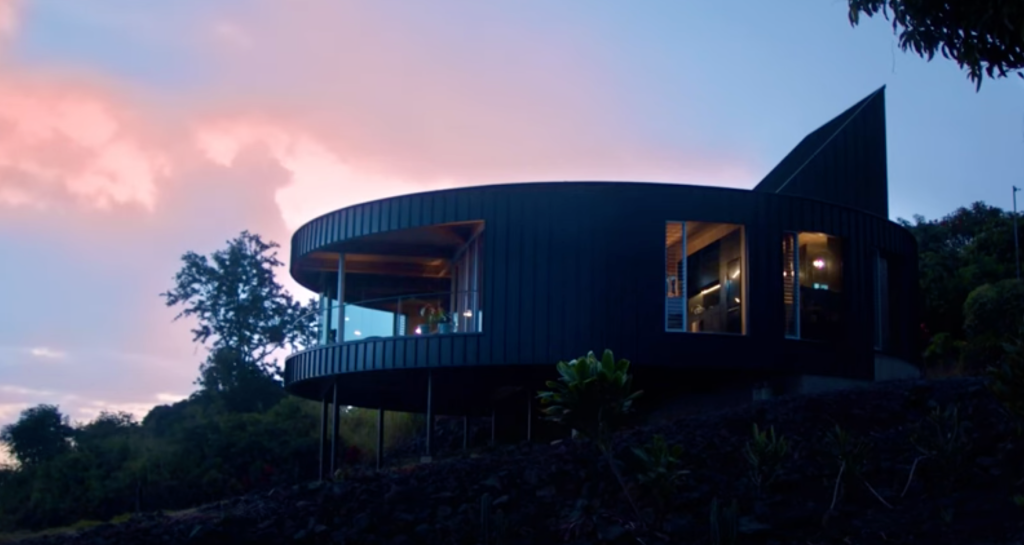
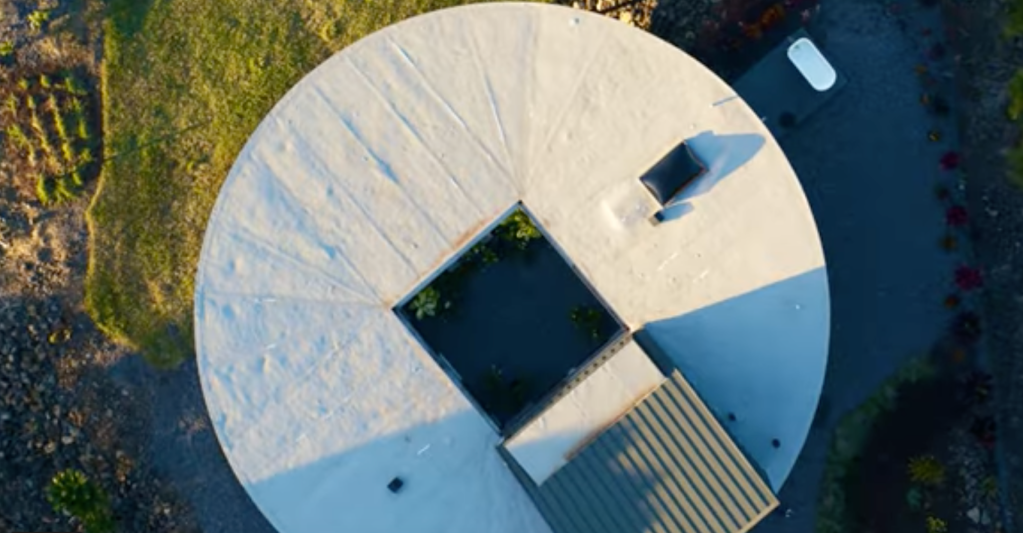
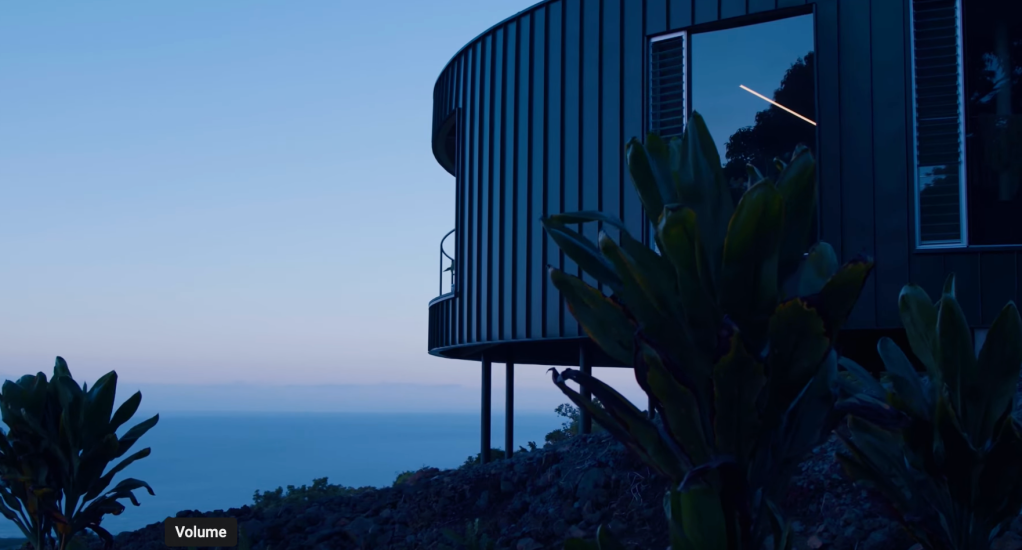
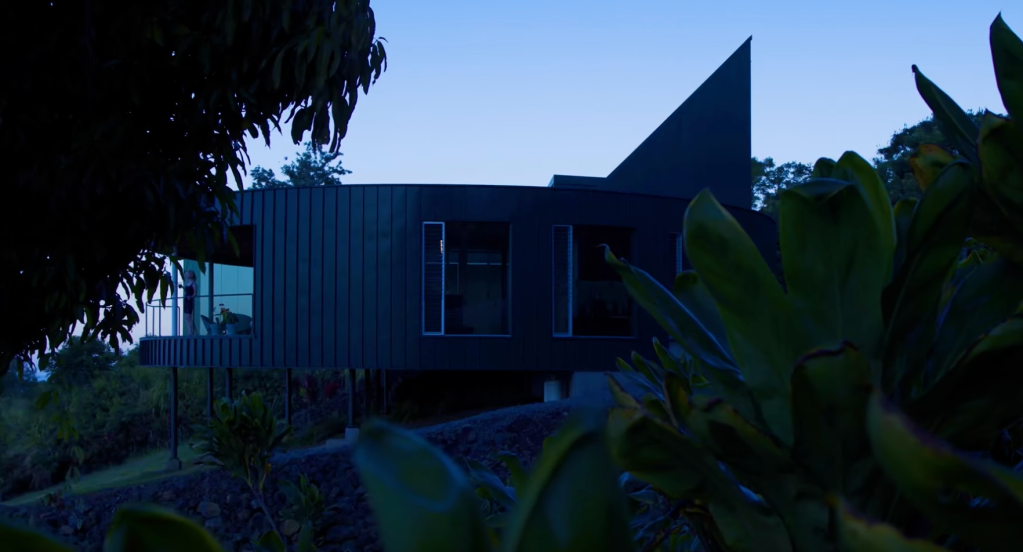
Architect Rudolph Matern — sometimes working with architects Herman York, Samuel Paul and others — was responsible for the design of tens of thousands of suburban homes during the US’s post-WWII residential construction boom. He sold architectural drawings for single-family homes via ads in local papers, blueprint catalogs, and model home exhibitions.
Here is his design G-92, a circular vacation home with four extruding wings, advertised in 1967 –
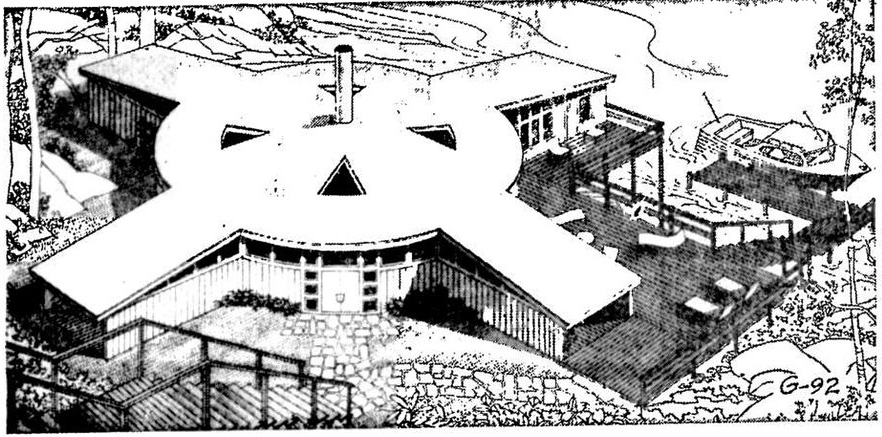
The literal centerpiece of the house was its sunken circular lounge, “a kind of combination living room, family room and what-have-you” –
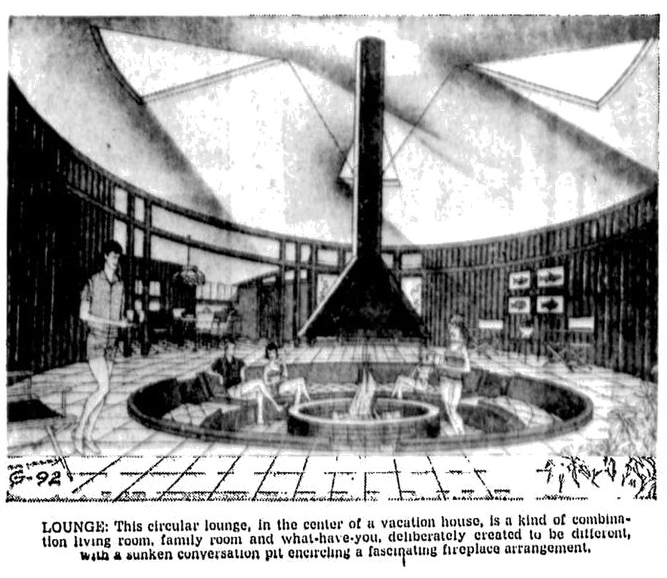
As far as I can ascertain, the design was never built.
For these surreal times, a house that has been compared to the sought-after bathroom item many are stockpiling: Casa Barría, Panama –
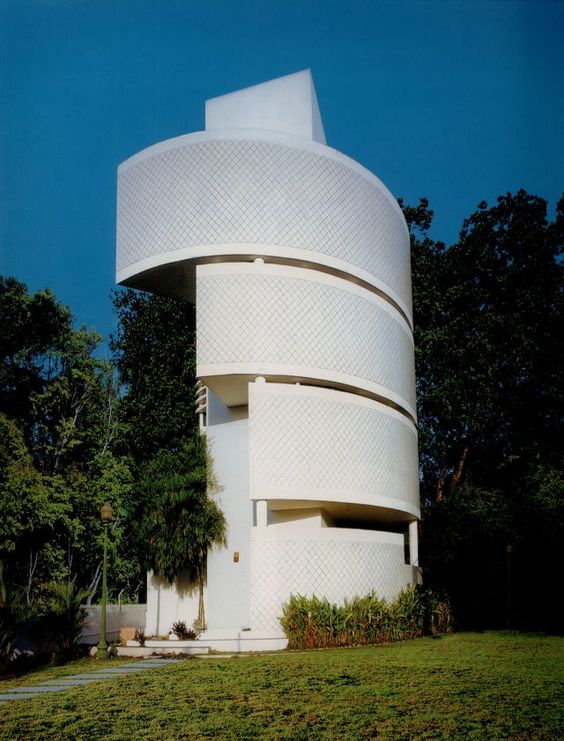
Designed by Mallol & Wolfschoon in 1986, it was built in 1990.
Designed by architect George Bissell in 1963, this house was a demonstration model for a nationwide association of cement companies. It was meant to show that concrete homes were modern, inexpensive, fashionable, and easy to maintain.
A “concrete ‘mushroom,’ of unsurpassed strength and stability,” said the house’s advertising brochure, “it is a major step forward in the development of minimum-maintenance housing, as well as a satisfying esthetic achievement.”
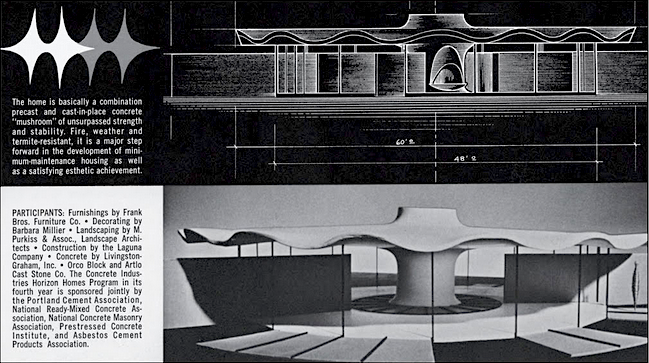
The first house in the new master-planned community of Laguna Niguel, in Orange County, California, it was visited by thousands of people when it was first built. All concrete and glass, with a floating, scalloped concrete roof, it was unlike any other house in the neighborhood, either before or since. While it didn’t spark a craze for round, all-concrete homes, as its developers may have hoped, it did manage to find sympathetic owners who didn’t tear it down or renovate it beyond recognition.
A mid-century round house in Madison, Wisconsin, has just hit the market –

Built in 1952-53 by architect James Dresser, who studied with Frank Lloyd Wright at Taliesin, the house has a central skylight, curved hallways, cork walls, a mix of wood and cork floors, and a round brick fireplace. It was for some years the architect’s family home.
Structurally, the house is a concrete shell built on a radial framework of curved steel beams. Stylistically, it’s both circular and angular, its round form accented by a series of triangular windows.
The innovative house was featured in a November 1952 edition of Popular Mechanics, which said, in something of rhetorical flourish, that “cobwebs will never collect in the corners” of the new house because “there aren’t any corners.”
“The boundary between inner and outer space no longer exists,” explain the designers of this tiny, round, mobile, convertible house –

Hungarian-born British modernist architect Ernø Goldfinger wasn’t a fan of the circle.
Yes, a circular house needs a spiral staircase –
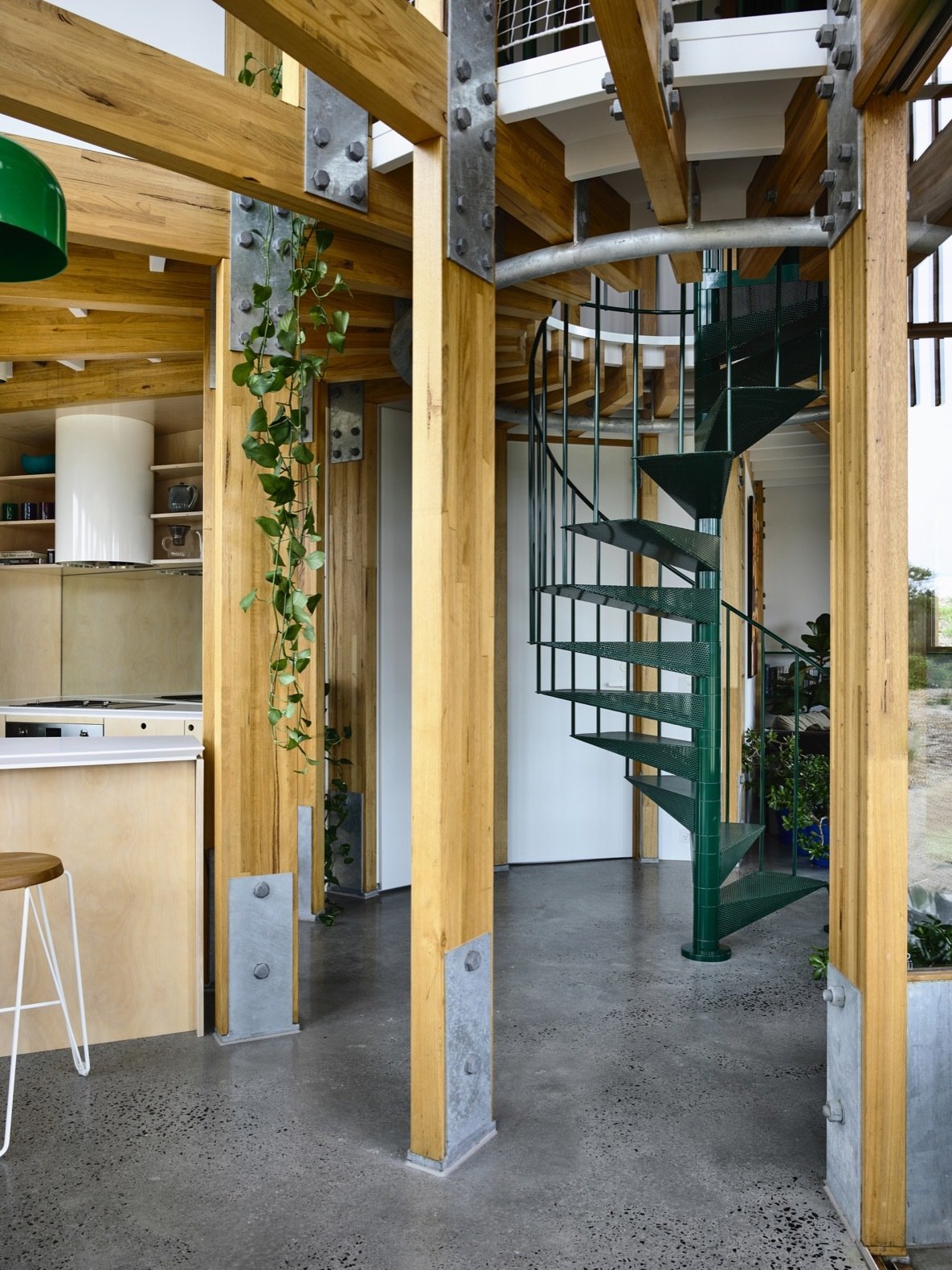
St Andrews Beach House — located on Australia’s Mornington Peninsula, in Victoria — is just off the beach, next door to a national park. It has an open floor plan and views of the landscape in all directions.

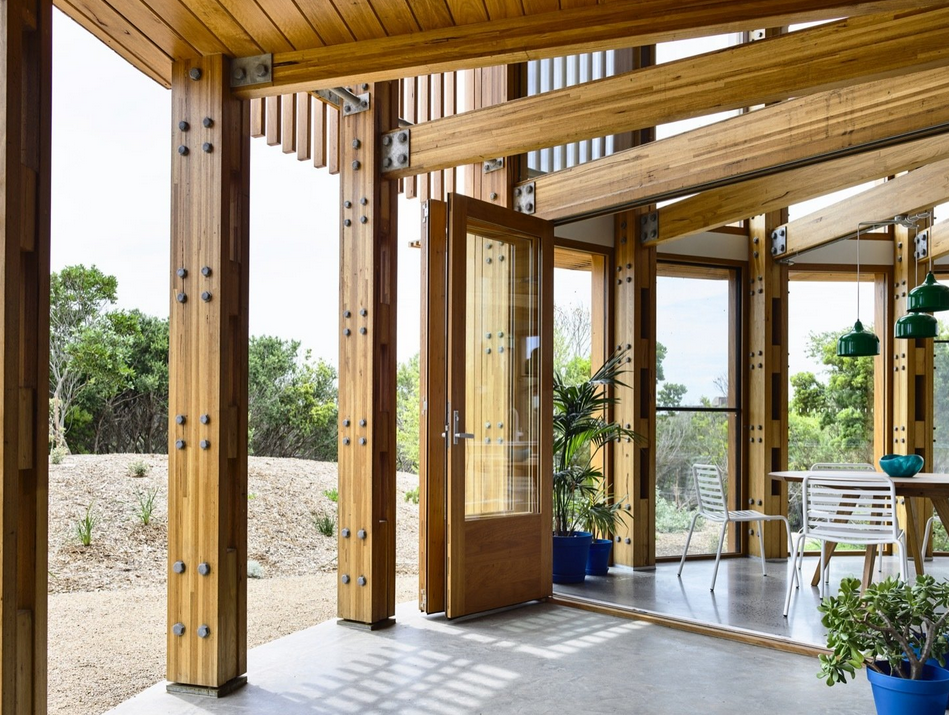
Before the spiraling Guggenheim Museum in NYC, there was this spiraling house in Phoenix –

Iconic American architect Frank Lloyd Wright designed the house in 1952 for his son David, who lived in the house with his wife Gladys until their deaths (at ages 102 and 104, respectively). After it was sold out of the family in 2009, it faced possible demolition at the hands of a rapacious developer, but was saved by lawyer/builder Zach Rawling.

Advised by Wright historians and preservation architects, as well as by his architecture-loving mother, Rawling spent several years restoring the house and grounds. He tried to turn the house into a museum, but neighbors opposed the plan, fearing that the residential area would be harmed by excessive traffic.
Rawling explained the house’s greatness –
“Great buildings impact every sense and create an emotional reaction,” said Rawling. “Wright’s original plans for the David Wright House are labeled ‘How to Live in the Southwest.’ After two years of being on the property, I appreciate living in the desert more than I ever have growing up. The care with which he sited the house to relate to the surrounding environment is incredible. Wright was a genius at thinking spatially. There is a continuous dance of light and shadows on the house. It’s a natural extension of the environment.”
Besides its architectural cachet, the house features hand-cut Philippines mahogany, custom-designed furnishings, one of Wright’s signature “March Balloons” carpets, a shaded central courtyard, and a 360-square-foot guest house.
For somewhere south of $13 million, it could be yours.
